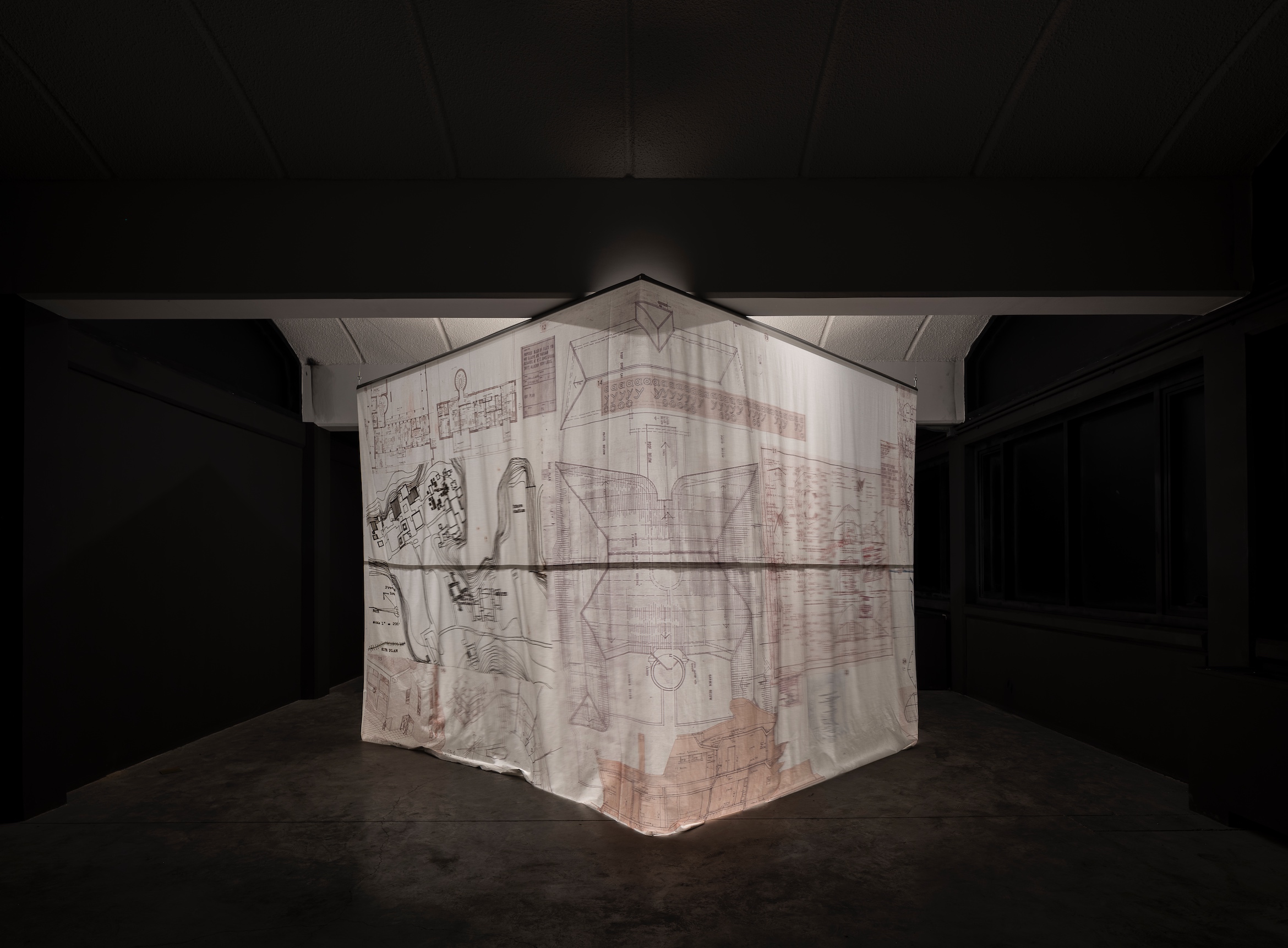Get a curated collection of design and architecture news in your inbox by signing up to our ICON Weekly newsletter
The Sharjah Architecture Triennial saw a new focus on redefining scarcity and abundance in Africa, writes our new columnist Rue Kothari
 Photography by Danko Stjepanovic, courtesy of Sharjah Architecture Triennial, featuring Ola Uduku and Michael Collins, Archive: The Work of Alan Vaughan-Richards, 2023
Photography by Danko Stjepanovic, courtesy of Sharjah Architecture Triennial, featuring Ola Uduku and Michael Collins, Archive: The Work of Alan Vaughan-Richards, 2023
Words by Rue Kothari
Africa is in my blood. It’s where my parents were born and raised, a small dusty town in Uganda where my grandfather ran a textile factory. Today, it’s where I often find my inspiration and where natural design thinkers are finding local solutions to global problems.
This might be because much of the Global North’s problems end up there. Countries like Uganda and Ghana have become dumping sites for the world’s waste, including discarded garments from fast fashion retail. Many make their way to giant marketplaces where vendors swap and sell. Now entrepreneurs are repurposing them into new boutique labels and furniture fabrics – they are even working to reverse the clock, turning old clothes back into cotton to be respun.
Across the continent you’ll see examples of problems turned into opportunities. In places where daily life is hard this is the only option. Visit Kenya’s capital Nairobi and you’ll find home-made 3D printers, fashioned from discarded electrical and engineering parts – allowing residents to print anything they need, quickly and cheaply, from keys and car parts to shoes and even prosthetic limbs.
 Photography by Stephen Tayo featuring Tosin Oshinowo, who has been appointed to curate the second edition of the Sharjah Architecture Triennial
Photography by Stephen Tayo featuring Tosin Oshinowo, who has been appointed to curate the second edition of the Sharjah Architecture Triennial
It’s also where visionary architects like Francis Kéré are continually rethinking the parameters and responsibilities of their work and how it impacts not only environments but communities. Their collaborative practices burrow deep into the supply chain to engage local labour, use local materials and provide healthcare and education for families, building not just a house but an entire sustainable ecosystem that will endure long after the architects have checked out.
At November’s Architecture Triennial in Sharjah, UAE, there was much discourse around the theme of adaptability. Entitled The Beauty of Impermanence, the curation focused on how artists and architects are integrating their practice with nature, communities and heritage. Creatives from across the Global South offered solutions on the climate crisis, housing shortage, how to address the problem of over 30 million displaced people and the wanton destruction of nature that continues in biodiverse systems like the Amazon.
Rather than suggesting yet more future innovation, many of the ideas drew their inspiration from the past. Bushra Mohamed’s Diasporic Hybridity for Future Ways of Living suggested that the richest inspiration lay in the past – taking traditional African housing typologies, with their diverse functionality, and transforming them for use by the African diaspora anywhere in the world.
 Photography by Danko Stjepanovic, courtesy of Sharjah Architecture Triennial, featuring Asif Khan Studio, Kalpa, 2023
Photography by Danko Stjepanovic, courtesy of Sharjah Architecture Triennial, featuring Asif Khan Studio, Kalpa, 2023
Kéré says the same thing: inventive responsiveness, not pointless innovation, is the key to sustainability in the Global South. Rediscovery, regeneration, renewal and adaptive reuse offer a far more resilient strategy for living and working with nature.
Tropical modernism, as practised by architects such as Koffi & Diabaté in Côte d’Ivoire, uses intuitive methods and materials that allow buildings to breathe. They understand, as many creatives working in challenging climatic conditions do, that you can’t fight or hold back the elements, you need to harmonise with them – using clever cooling systems, indoor outdoor spaces or biophilic design.
All innovation in projects like these have a purpose that is driven by need – a resilience possessed by those lacking in rights and currency, but with the toolkit to survive in an ever-hostile world. It’s the redefinition of scarcity and abundance not as the endless demand and supply of more and better, but an ideology that resonates at a higher frequency – the access to clean resources and a safe and healthy future.


















